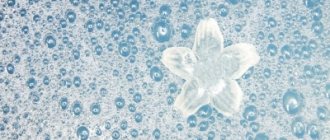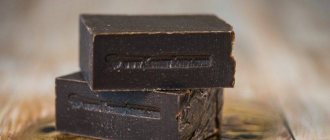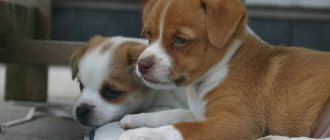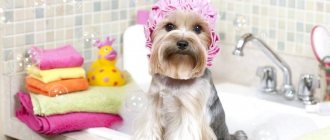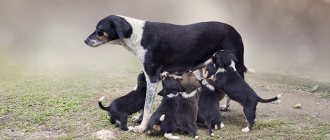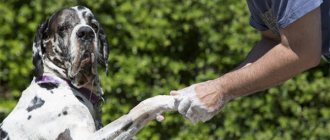One of the main components of dog care is hygiene. The pet must be clean, regardless of size and breed. Bathing a dog is a necessary procedure. But not all owners know how often to wash a dog and how to do it correctly. Many owners of four-legged animals still disagree about the frequency and regularity of hygiene procedures, as well as the need to use special means for this.
Frequency
By time of year
The animal’s paws are washed without soap every day after every walk at any time of the year. Maintaining good hygiene will help you stay healthy.
According to the recommendation of veterinarians, the procedure should be carried out once a month. Zoologists are of the opinion that a pet should be washed as it gets dirty, but not more than once every 10 days. This is especially true for animals living in the yard. Cosmetics are chosen to be natural so as not to harm the pet’s health.
Bathing a dog according to the time of year has its own characteristics that must be studied first:
- Winter time. During the cold season, the animal is bathed with shampoo less often, because there is a risk of catching a cold. Clean, freshly fallen snow is an alternative to swimming. It is enough to periodically wipe the fur during a walk, and the pet will be clean. You need to be careful, because... roads are sprinkled with anti-ice agents. Therefore, the paws are wiped with a damp cloth or rinsed with cool water. The absence of temperature changes will have a beneficial effect on skin health.
- Spring period. When snow and slush melt outside, the dog needs to be washed with detergents once a month. For a complete swim, you need to take into account the weather and air temperature. In cold weather, it is better to avoid the procedure. Paws are also wiped after each walk. Animals from the enclosure undergo this procedure before each entry into the house.
- Summer months. During the hot season, sometimes the temperature reaches its maximum, so you need to monitor the dog’s condition. In the case when the animal is rinsed in a pond or inflatable pool on the site, it is washed with soap once a month. If additional water procedures are not provided, then it is better to bathe 2-3 times a month. Autumn period. Autumn can be dry and with a lot of rain. In slushy weather, you need to follow the recommendations for spring. If the weather is warm, it is enough to take care of the paws and wash off the dust from them. In this case, full bathing is carried out 1-2 times every 60 days. Frequent bathing will wash away the layer that protects from the cold.
Bathing depending on breed and coat length
The breed of the pet should be taken into account, because... each has a different coat structure and length.
Basic tips:
- Small breed dogs for exhibition are washed before each event, but not more than once a week. In normal times, the coat is groomed several times a month.
- Breeds with coarse hair need to be washed less often, because... capable of self-cleaning. It is recommended to carry out procedures once every 60 days. The frequency of bathing depends on the degree of contamination and the condition of the pet.
- Short-haired dogs are given a full bath with shampoo several times a year. Due to the lack of undercoat, frequent hygiene leads to hair loss. To maintain cleanliness, use a sponge soaked in water and vinegar.
After the haircut, the dog needs to be washed. In the case when the animal is recovering from a treatment procedure, it is better to refuse hygiene procedures.
Using shampoos
There is no need to pour pure shampoo on your dog. It is diluted with water in a small container. The sequence of the procedure is as follows:
- the wool is well wetted;
- paws and body are treated with a sponge dipped in soapy water;
- The armpits, groin area, and area near the anus are thoroughly washed;
- the head is raised up, washed, excluding water from getting into the nose, eyes, ears;
- All areas are thoroughly rinsed with a shower to completely remove the soap solution.
Attention: The cleanliness of the wool is checked by pulling it between your fingers. When dirt is removed efficiently, it creaks and there is no slipping.
When washing, you can use conditioners and balms that provide protection from UV rays and prevent wool from matting. These cosmetics are also mixed with water.
Is it possible to wash after vaccination?
Any intervention in the body is stressful for the dog. Vaccination is a medical procedure to inject a weakened virus. In the process, immunity to this disease is formed. After vaccination, the pet’s body is weakened, because fights viruses. Usually the animal is quarantined for two weeks and its condition is monitored.
At this time, it is better to avoid swimming with detergents.
Use alternative care methods. Products containing chemicals should be chosen with caution. Allergic reactions complicate the recovery period. Small puppies are most susceptible to colds after vaccination. Swimming can cause infection and the onset of illness.
Choosing a cosmetic product
An illiterate choice of shampoo can cause dermatitis, allergic reactions, and hair loss. It is impossible to recommend a specific shampoo for all dogs. You need to choose a shampoo taking into account the individual characteristics of the dog.
Important components for dog shampoo are egg yolk, lecithin, lanolin. Thanks to these components, it is possible to maintain the normal structure of the dermis and coat.
Attention: Anti-flea shampoos cannot be used for preventive purposes. These products contain toxic components.
During heat
Estrus is a physiological process in female dogs. Depending on the breed and the amount of discharge, different care approaches are used. The period can be very difficult for the female with deterioration in health and loss of appetite. In this case, it is better not to touch the animal. When the animal washes itself, it will get rid of the secretions. For convenience, you can use diapers.
Important! During estrus, swimming in the pool and reservoirs is prohibited, as you can get an infection.
In cases where washing the dog is necessary, the procedure is carried out at home.
To avoid inflammation of the genital organs, you need to bathe very carefully. It is recommended to use warm water and mild detergents.
After completing the procedure, the fur must be wiped and dried well so that the pet does not get sick. You need to monitor your dog and prevent hypothermia after bathing.
Is it necessary to dry the animal?
Many owners have a question: where to put the dog after bathing, whether it needs to be dried. After washing, the dog will shake itself off and dry its fur. Do not use a hair dryer or dryer. If you have to use a hair dryer, the air in it should not be too hot.
Outdoor dogs will need more frequent bathing than couch potatoes.
How to wash properly
Basic rules will help you care for your pet and not create stress for him during the procedure.
The following recommendations should be followed:
- The pet's head is washed carefully. Avoid getting foam into the dog's eyes and ears. The product will provoke an inflammatory process.
- Ventilation during the procedure is kept to a minimum. Drafts will lead to infectious disease.
- Large breeds are best bathed with a collar and muzzle. The process in this case is easier to control, and the risk of injury to a person is eliminated.
- After bathing, you need to wait a few hours for the coat to dry. Therefore, it is better to plan a walk in advance so that your health does not worsen.
- Talk to the dog kindly to calm him down. Screaming and raising your voice provoke aggressive behavior. As a reward, at the end of the procedure they treat you with a treat.
- It is important to familiarize yourself with the composition of the product. Aggressive ingredients often cause allergic reactions. The shampoo should gently cleanse, be safe and not injure the skin.
- Drying is carried out naturally using a towel. If you can’t do without a hairdryer, then it is recommended to choose the cold air mode.
- For skin diseases, the veterinarian prescribes bathing with special products. To help the pet cope with the problem, washing is carried out in courses.
- It is important to completely rinse the detergent from your dog's fur. Leftover shampoo causes skin irritation.
- For comfortable bathing, the water is heated to room temperature. It is unacceptable to wash the animal in hot and cold water.
Contraindications for water procedures
It is not possible to bathe a dog in all cases. Despite the presence of dirt, there are a number of contraindications to carrying out water procedures.
When not to bathe a dog
The main contraindications include the following:
- the first 20 days after birth (the temperature of newborns is only 33-36°C, so they catch colds easily);
- 3-7 days before and after antiparasitic treatment;
- 2 weeks before and after vaccination;
- presence of illness and severe weakness;
- recent surgery;
- 7 days after birth.
In these situations, only combing and wiping with a damp cloth, as well as dry washing, are allowed.
When to Proceed with Caution
It is recommended to observe restrictions when swimming until all mandatory vaccinations are given, during estrus and during pregnancy. In the first two cases there is a high risk of infection, and in the third - creating a stressful situation.
IMPORTANT!
If your pregnant pet is very dirty, but is not afraid of water treatments, then you can wash her, provided that basic safety measures are followed.
Bathing puppies
In order for the puppy to get used to water procedures, he is introduced to water from an early age. The age of the baby for the first bath depends on the breed and living conditions.
A grown puppy who came home from the street takes a bath right away. Newborn babies left without a mother are wiped only with a damp sponge. If the pet was brought from a breeder, then hygiene procedures are carried out after a two-week quarantine from vaccination.
A bowl of water at a temperature of 35 °C is prepared for the puppy. A rubber mat is spread on the bottom to avoid slipping and subsequent injuries. It is important to bathe quickly for the first time. Apply detergent to your back and rinse gently. It's better not to use the shower. This way the animal will be calmer. The wool is dried with a towel. Drafts and hypothermia should be avoided.
You can't often bathe with shampoo, because... the protective fat layer is washed off. It will take time for him to recover.
Preparatory process
Before washing, a long-haired pet should be combed and old hairs removed. This will make bathing and drying easier. You also need to remove stray tangles and prevent tangling. You can use Ring 5 in preparation. The spray moisturizes the coat and prevents hair from being pulled out.
You can wash your dog in a shallow trough or bathtub, the bottom of which is covered with a cloth or rug. Anti-slip coatings will provide the dog with stability and eliminate stress.
When washing, the water should be comfortable for the pet, the optimal temperature is 35-40°C.
Washing adult dogs
It is more convenient to bathe an adult in a bathtub. Before the procedure, it is recommended to comb and remove matted hair, thorns and ticks. A rubber mat at the bottom of the bath will protect your pet from injury. To prevent water from getting into the ears, cotton pads or swabs are inserted for protection.
If the animal is afraid, then you need to start with preparation. Water is not collected immediately.
With gentle movements, first rinse the paws, smoothly moving to the back. The water should be at room temperature to avoid damaging the skin.
Pouring from a container or shower onto your head is prohibited. If you need to wash, do it with careful hand movements. The selected shampoo is applied with massage movements, gradually distributing over the body. Next, the product is washed off. Dry your dog with several towels. Wipe until the fabric remains dry.
Then the dog begins to shake itself off. At the end of the procedure, the hair is combed again. Ears and eyes are cleaned separately. Remedies are chosen on the advice of a veterinarian.
Attention! Dog odor cannot be removed by frequent washing. You can only harm the animal.
What to do if your pet resists
Bathing doesn't always go smoothly. Some pets are quite afraid of water and can be aggressive.
Fears
The solution to a problem depends on its causes. Only phobias are eliminated by taking medications, and fear is worked off through gradual habituation. Treats are mainly used as reinforcement: before, during and immediately after the procedure.
Remember that screaming and persistently pushing the animal into the bath will only make the situation worse. Be patient and restrained, because, first of all, the four-legged animal reacts precisely to your emotions. If you give in to excitement and anger, then do not expect anything different from your pet.
Shows aggression
Aggression is most often explained by fear, so after it is worked through, it disappears. During this time, it is recommended to use a nylon muzzle and shorten the claws to protect against bites and scratches.
Training and education
To avoid the problems listed above, it is better to bathe your dog from childhood, that is, after receiving mandatory vaccinations. Start training by introducing yourself to an empty bathroom. Let your pet sit there and play with his favorite toy. This will help form pleasant associations.
When using the shower, be sure to give treats and carefully monitor reactions to different parts of the body. Over time, the feeling of panic will disappear, and your four-legged rebel will calmly stand under the running water, hoping for praise and an encouraging treat.
conclusions
Keeping your pet clean is important for its health. Depending on the breed and condition of the dog, the frequency of bathing varies. The procedure is carried out competently so as not to frighten the animal. Proper bathing ensures safety for the pet and its owner. Do not forget that after a walk, the dog needs to be partially washed - without soap and shampoo. To maintain hygiene, it is recommended to alternate dry shampoo and classic detergents.
Read more: Rating of anti-flea shampoos.
The more foam, the cleaner the dog
This is another misconception that has no basis. A high-quality shampoo does not have increased foaming. It is not foam that cleans, but special surfactants that actively moisturize the coat and remove dirt. Special shampoos for animals usually do not create too much foam.
Whatever product is used, it is important to thoroughly rinse the coat with running water after bathing, rinsing off any remaining shampoo, and making sure that it does not get into the animal’s eyes.

